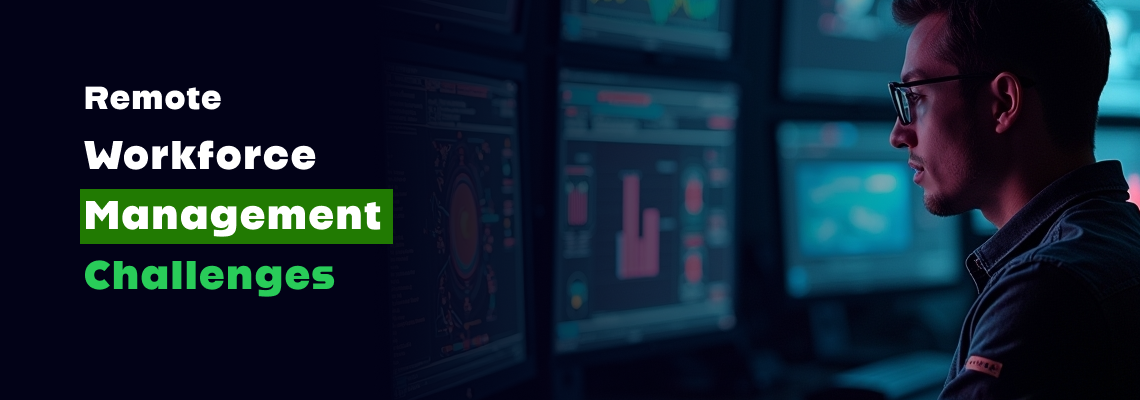Remote work opened the door to a worldwide talent pool, lower operational costs, and greater flexibility. But it also opened Pandora’s box. Employers now face a host of challenges including remote employee fraud, remote work risks, and remote work security concerns that traditional office environments rarely encounter.
Let’s unpack what this shocking case really reveals and how to protect your business from becoming the next victim.
According to the Moneycontrol article, this individual, who formerly worked at a nail salon, allegedly managed to land and juggle over a dozen remote IT jobs. He used various identities and outsourced much of the actual work to other contractors. Meanwhile, he collected full salaries from multiple employers, none of whom realized they were being duped.
This wasn’t just a clever hustle. Rather, it was a multi-layered fraud operation that exposed significant vulnerabilities in remote workforce management. The sheer audacity of this scam highlights a disturbing truth that without proper safeguards, any organization can fall prey to this kind of deception.
What’s particularly alarming is how this story underscores a growing trend. Remote employee fraud is becoming increasingly sophisticated. Fraudulent credentials, ghost workers, impersonation, and multi-job juggling are no longer outliers. Rather, they’re patterns emerging across industries.
And it’s not just about the money. Imagine the damage to project timelines, team morale, and client relationships when someone is being paid to do a job but isn’t actually doing it. Worse still, in critical sectors like finance or healthcare, such deception could compromise data security, compliance, and lives.
If a non-technical individual can fake their way into 13 IT jobs, what does that say about the current state of remote workforce management? Simply put, most companies are unprepared.
Many organizations rushed into remote operations without robust systems to validate identities, measure real-time output, or monitor unusual behavior. As a result, they’re unable to detect fraud until it’s too late.
This is where employee monitoring tools plays a crucial role. Not as a tool of micromanagement, but as an intelligent layer of defense that helps detect anomalies, track productivity, and ensure your workforce is delivering what it promised.
Let’s be clear here. Remote work is not the enemy. The lack of accountability is. When teams are scattered across geographies, operating independently, the risk of abuse escalates.
Remote work risks include everything from data leaks and insider threats to simple absenteeism. Without visibility, it’s impossible to know if your employee is engaged, over-extended, or, like in this case, moonlighting across multiple companies.
The real damage isn’t just in salary loss. The fallout includes diminished trust, legal exposure, and reputational damage.
An often-overlooked dimension of remote workforce management is dealing with the insider threat in remote work. These aren’t always malicious actors. Sometimes they’re simply opportunistic. But the result is the same which is compromised integrity of your operations.
In the case of the nail salon worker, this threat was both intentional and systematic. Yet, it thrived under the radar because the companies lacked mechanisms to detect abnormal employment patterns or inconsistencies in performance.
Tools that utilize AI-driven behavioral analytics can now identify such red flags in real-time. A sudden dip in performance, erratic log-in behavior, or a mismatch between claimed skills and actual output are all indicators of potential insider threats.
Wondering how to safeguard your business from falling into the same trap?
First, recognize that secure remote team management is not optional but foundational. It begins with rigorous vetting during recruitment, multi-factor authentication for identity validation, and regular performance audits.
Second, implement employee monitoring software that comes with privacy but enforces accountability. These tools offer visibility into work patterns, helping you assess whether someone is genuinely contributing or merely clocking hours.
Third, promote a culture of transparency. Employees are less likely to abuse the system when expectations are clear, metrics are transparent, and feedback is continuous.
Organizations must move from reactive to proactive. Preventing remote work fraud begins with early detection and intelligent analytics.
Don’t wait for anomalies to surface. Keep an eye on productivity as it happens and know what ‘normal’ looks like so you can spot when something’s off. If one employee’s output suddenly drops or they’re taking longer-than-usual response times, investigate. Maybe they’re just swamped… or maybe they’re working for four other companies too.
Don’t assume resume claims are accurate. Verify them and conduct skill assignments, background checks, and simulated tasks during onboarding.
And most importantly, cultivate a digital culture that values integrity as much as it does innovation.
Now that home and work are overlapping more than ever, it’s time to rethink how we manage people. Remote workforce management can no longer be about trust alone. It must be about intelligent trust backed by systems, software, and strategy.
In this new reality, businesses must invest not just in hiring great people, but in managing them well. That means giving managers the tools to track progress without surveillance, to detect fraud without paranoia, and to foster collaboration without chaos.
The story of the 13-job scammer is more than just a curiosity. Rather, it’s a signal. A signal that we need to redefine how we manage, measure, and maintain our remote teams.
Because the next time, it could be your company footing the bill for a ghost employee who’s already working for a dozen others.
Remote work is here to stay. But so are the challenges that come with it. The key lies not in abandoning remote operations, but in mastering remote workforce management with a sharper eye and smarter tools.
From remote employee fraud to insider threats in remote work, the dangers are real, but they are also preventable. Through better onboarding, stronger verification, smarter monitoring, and culture-driven leadership, businesses can mitigate remote work risks and build a truly secure, high-performing distributed team.
It’s no longer just a matter of placing trust in your remote employees. It’s whether you’ve done enough to ensure that trust is well placed.



